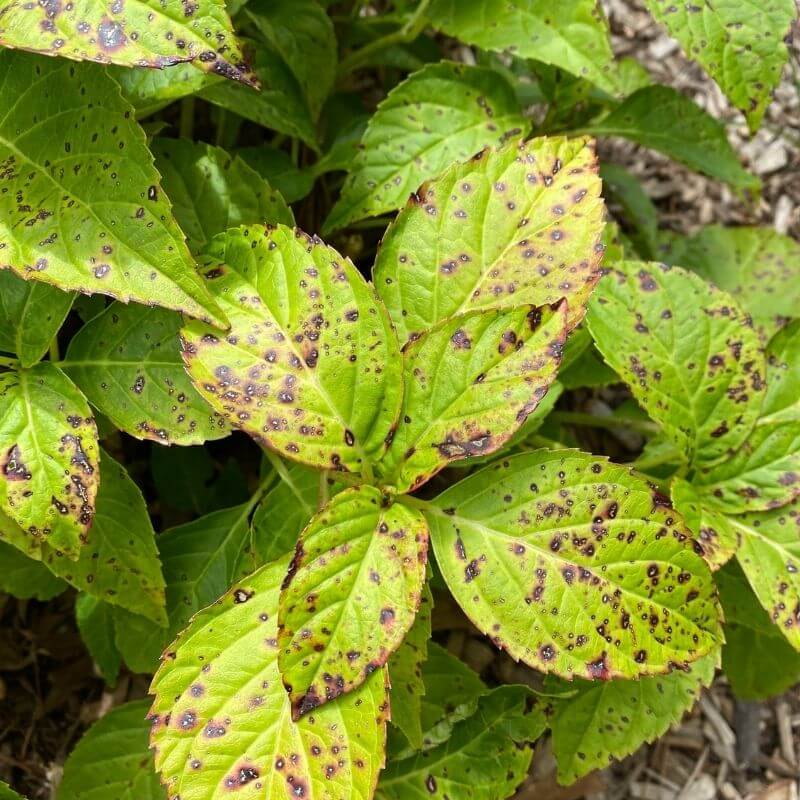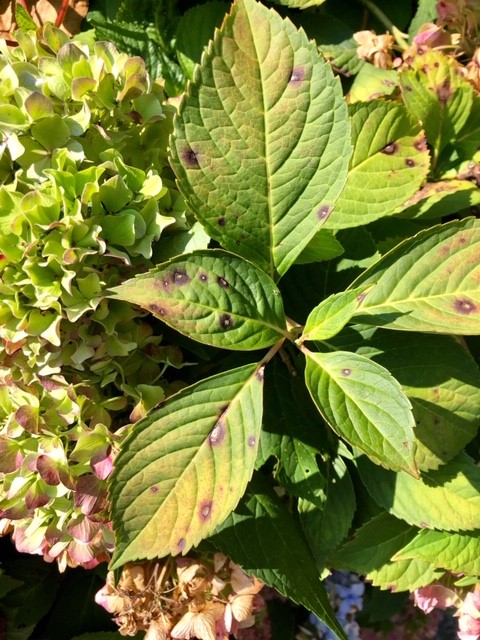How Hydrangea Leaves Turning Yellow can Save You Time, Stress, and Money.
Wiki Article
Hydrangea Leaves Turning Yellow Can Be Fun For Anyone
Table of ContentsThe Buzz on Hydrangea Leaves Turning YellowFascination About Hydrangea Leaves Turning YellowUnknown Facts About Hydrangea Leaves Turning YellowThe Ultimate Guide To Hydrangea Leaves Turning YellowThe Greatest Guide To Hydrangea Leaves Turning YellowThe 25-Second Trick For Hydrangea Leaves Turning Yellow
One possibility is that the plant is not getting sufficient sunshine. Throughout the cold weather, the days are much shorter, and the sunlight is not as intense, so make certain to place your Hydrangea in a place where it will certainly access least six hours of sunshine daily. One more reason for Hydrangea yellow leaves in winter season could be way too much water.Ultimately, the fallen leaves may be turning yellow due to temperature level anxiety. Hydrangeas like cooler temperature levels, so if the plant remains in a place that gets also hot or too cool, the leaves will certainly turn yellow. If you think temperature level anxiety might be the problem, attempt relocating your Hydrangea to a various area or securing it from the components with a cloth cover.

Some Of Hydrangea Leaves Turning Yellow
In the springtime when the mercury stays reasonably low, they'll do great. When points heat up over the summertime however, time invested in the early mid-day rays can cause untold damage.: Expand your hydrangeas in a place where they'll obtain sunshine in the mornings or nights, but not during the peak hours.Wilting is triggered by lack of wetness, suggesting there are a few great techniques to make use of to avoid this from happening - Hydrangea Leaves Turning Yellow. Give your hydrangeas a healthy glug of water every couple of days when the temperatures are climbing high, and deal with the soil to better retain moisture. After watering, a bit of mulch around the base of each plant should assist with this by keeping dampness in the soil

The Greatest Guide To Hydrangea Leaves Turning Yellow
As a general policy of thumb, we advise removing leaves when they are 50% brownish or greater. While browning brought on by any reason can't be reversed, taking the corrective action described above will encourage the plant to expand brand-new fallen leaves so the harmed fallen leaves either drop off normally or can be gotten rid of by the gardener.Hydrangeas ought to be watered just when the leading few inches of dirt are completely dry, and must be given an extensive soaking each time. Underwatered hydrangeas are most likely to have yellow, wilting, and sagging leaves.
The means you take care of hydrangea leaves turning yellow depends on the key problem causing the yellow leaves. This can be challenging to identify, once you do you will certainly be able to adjust your plant treatment as necessary to look after the problem. Hydrangea Leaves Turning Yellow. As discussed before, a common concern with hydrangeas is nutrient shortages
Rumored Buzz on Hydrangea Leaves Turning Yellow
Throughout the top expanding period, you should water at a rate of concerning 1 inch per week. If you are stressed over not properly sprinkling your hydrangeas, there are a pair of things you can do. Adding mulch to the base of the plants over the root zone assistance to manage the temperature level around the shrub and keep water in the dirt.Additionally, you can buy and set up straightforward watering worlds. Watering globes hold water in them and gradually launch this water into the dirt as the ground comes to be completely dry. Merely fill the world with water, stick the spout into the dirt within the origin area near the base of the plant, and leave it in place until all the water is gone.
If it is too extreme, some plants will certainly never recover from transplant shock and will certainly remain to decline until they die. Reduce transplant shock by including as numerous origins as possible when digging up your plant to relocate it. Make certain to supply even more water than my site typical in the weeks following growing to aid your plant recover and expand her comment is here brand-new roots.
8 Simple Techniques For Hydrangea Leaves Turning Yellow

To avoid spreading out fungal diseases, make certain to thouroughly clean and sanitize any type of trimming tools prior to and after usage. Lastly, you can try to flush the roots with water to eliminate excess fertlizer.
Your hydrangea plant favors well-drained, moist soil. If the pot has bad drainage, or your soil is flooded, the fallen leaves will start to transform yellow.
If you do not water your hydrangea plant for even more than a week, the fallen leaves will certainly start transforming yellow. Fungal illness that attack the plants tend to reveal indicators on the roots and the leaves of the plant.
Hydrangea Leaves Turning Yellow for Beginners
Leaf place is one more fungal condition that can target hydrangea. find out here It results in the fallen leaves turning yellow and the appearance of brownish and purple areas on the fallen leaves.Report this wiki page